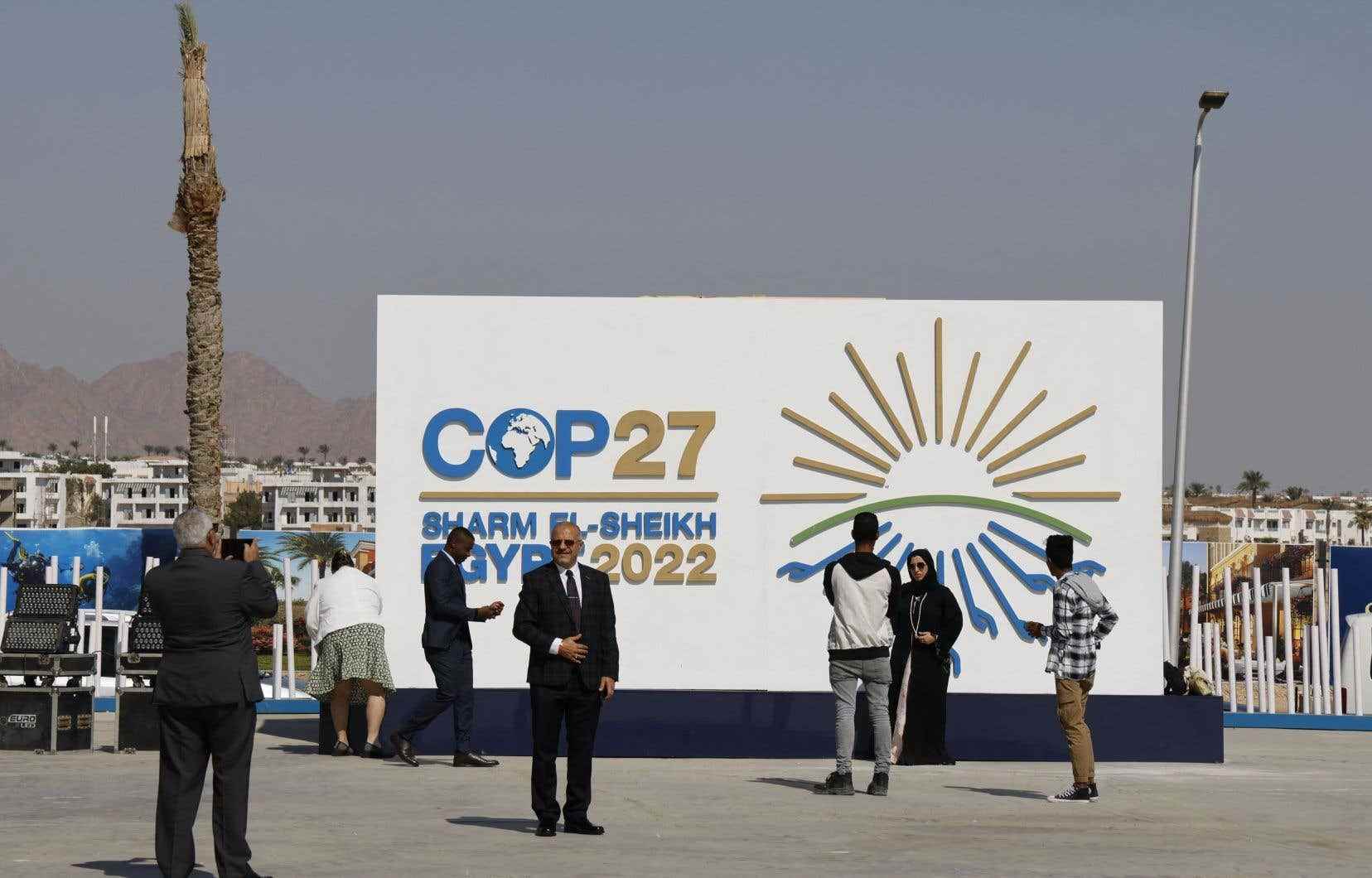The UN world climate conference opened on Sunday in the Egyptian seaside resort of Sharm el-Sheikh, for once, the issue of climate reparations from northern countries to southern countries has been officially added to Agenda.
Until November 18, delegates from all over the world will try again this year to breathe new life into the fight against global warming and its ever more apparent impacts: historic floods in Pakistan, heat waves in Europe, hurricanes, fires, droughts… Disasters which already amount to tens of billions of dollars and for which the countries of the South are claiming financial compensation.
This thorny issue of “loss and damage” was officially added to the agenda at the opening ceremony, when it was only to be the subject of annual meetings, scheduled until 2024. is what was decided in November 2021, during COP26, when the proposal to establish such a financing mechanism was rejected by developed countries.
“I think it’s something quite important and it’s partly due to pressure from the G77 + China and the fact that COP27 is happening in Egypt,” said Thomas Burelli, professor at the Faculty of Law of the University of Ottawa and co-director of the Center for Environmental Law and Global Sustainability, who welcomes the decision.
Negotiators agreed after two days of preliminary talks to formally discuss the issue of vulnerable nations receiving compensation for loss and damage caused by climate change. These relate, for example, to loss of life, health, land, cultural heritage, sense of belonging, agency, identity, indigenous and local knowledge, and biodiversity and ecosystem services.
German climate envoy Jennifer Morgan, who led negotiations on the issue with Chile ahead of the talks, said the deal could also help negotiators make “serious progress” on the climate issue. reducing greenhouse gas (GHG) emissions.
Resistance and distrust
This is a long-standing issue that comes up regularly in climate discussions, but no specific mechanism has yet been put in place to compensate states, recalls Mr. Burelli.
If an agreement is adopted, this mechanism will become the third pillar of “climate finance”, after adaptation mechanisms — which include measures that will help States limit their greenhouse gas emissions — and mechanisms for mitigating the effects of the climate crisis. “It’s an essential addition,” explains the law professor.
“The northern states will [toutefois] fight tooth and nail so that we do not recognize their historical responsibility, believes Mr. Burelli. A country may agree to there being a loss and damage mechanism, but as was pointed out in the decision that accompanied the adoption of the Paris Agreement, this does not mean that there is acknowledgment of liability and acknowledgment of any compensation for the southern states. »
It is also not easy to determine the precise causality of a climatic catastrophe. “Responsibility for greenhouse gas emissions is common, so it’s very complicated to point the finger at a particular actor,” he adds.
And on the other side of the hemisphere, a certain mistrust has set in among the developing countries, because a ten-year-old promise has still not been kept: the countries of the North had committed in 2009 to disburse 100 billion US dollars per year by 2020 in order to help the countries of the South to fight against the effects of climate change. Canadian Environment Minister Jonathan Wilkinson and German State Secretary for the Environment Jochen Flasbarth estimated last year before the start of COP26 that the target would not be met before 2023.
“If we leave developing states alone to deal with these issues, it risks seriously harming their GDP and they will have to put a lot of resources on it; resources that they will not be able to put into adaptation and mitigation [des conséquences de la crise climatique], concludes the professor. This is a matter of climate justice and justice between states. »
“The success or failure of COP27 will be judged on an agreement on this loss and damage financing facility”, had also warned Munir Akram, Pakistan’s ambassador to the UN and president of the G77 + China, who represents more than 130 emerging and poor countries.
“Papitably not up to par”
As these negotiations take place against the backdrop of an ever-increasing climate crisis, a step back from the already insufficient emissions reduction commitments must be avoided at all costs. Only 29 countries have submitted enhanced reduction plans since COP26, even though they had adopted a pact calling on them to do so.
Greenhouse gas emissions must fall by 45% by 2030 to have a chance of limiting global warming to 1.5°C compared to the pre-industrial era. But the current commitments of the signatory states, even if they were finally respected, would lead to a 5 to 10% increase in emissions, putting the world on a trajectory at best of 2.4°C by the end of the century.
“Pitifully not up to the task”, castigated the Secretary General of the United Nations, Antonio Guterres, who deplores that the climate has been relegated to the background by the epidemic of COVID-19, the war in Ukraine, the economic crises, energy and food.
More than 120 heads of state and government are expected on Monday and Tuesday for a summit that is supposed to give impetus to these two weeks of negotiations.
Without the Chinese President, Xi Jinping, nor the American, Joe Biden, who will quickly go to the COP on November 11. Cooperation between the world’s two main emitters of greenhouse gases, whose relations are strained, is nevertheless crucial. Prime Minister Justin Trudeau will also not take part in the global conference.
With Agence France-Presse and the Associated Press
